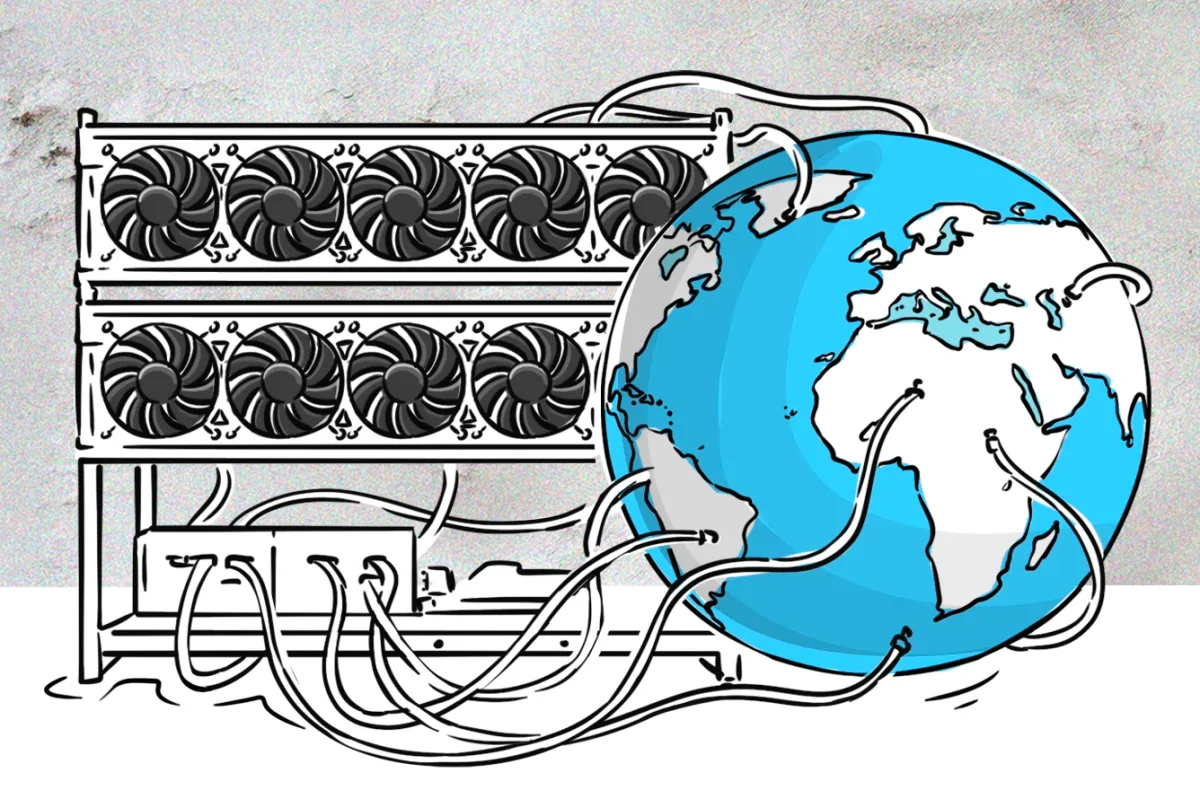
As Bitcoin nears its halving event in April this year, the mining industry is gearing up to face the new reality, with revenues expected to halve. While some mining companies invest in newer, more efficient technologies, others are relocating their older equipment to regions like Africa, where operational costs may be lower.
At its core, Bitcoin mining is a straightforward competition where powerful, specialized computers—Application Specific Integrated Circuits (ASICs)—compete to find a lucky combination of numbers (known as a nonce) as quickly as possible. The first to solve the equation wins the block reward. An intriguing aspect of this competition is that as more miners join the network, the difficulty of winning increases, ensuring the system’s security and fairness.
Currently, the mining difficulty is at an all-time high, indicating a fiercely competitive environment, with highly advanced equipment in the fray.
Source: coinwarz.com
This competitive landscape means mining companies must continually upgrade their hardware if they want to stay in the game. Utilizing outdated ASICs becomes increasingly untenable, not just due to the competitive disadvantage, but also because of the significant electricity consumption, which can render older machines unprofitable depending on Bitcoin’s price.
Meanwhile, governments are starting to worry about the environmental costs. Iceland recently announced it is pushing back on mining. “Bitcoin is an issue worldwide," Prime Minister Katrín Jakobsdóttir told the Financial Times, stressing they will focus on corn rather than coin moving forward. "Data centers in Iceland use a significant share of our green energy."
Still, in recent months, there has been a notable acceleration in Bitcoin mining companies placing orders for new equipment. According to TheMinerMag, miner investment commitments have exceeded $1.2 billion in the past year, with about $750 million of that amount allocated in the fourth quarter of 2023 alone.
Moreover, public mining companies have secured hundreds of millions of dollars to finance new equipment purchases. Leading firms like Marathon, Riot, and CleanSpark have raised over $1.5 billion through equity financing since the fourth quarter to cover capital expenditures.
Even with outdated equipment, mining companies can employ varied strategies. Some opt to sideline their old hardware, waiting for a potential Bitcoin price increase that could render them profitable again. Others seek regions with lower electricity costs to extend the profitability of their equipment.
Ethiopia, for instance, has emerged as a prime destination for relocating mining rigs, largely due to its affordable electricity. As reported by Bloomberg, the country has attracted significant attention from miners in 2023, with some considering it as a viable location to extend the operational life of their older machines.
Jaran Mellerud, CEO at Dubai-based Hashlabs Mining, noted that post-halving, some models may not be profitable under typical circumstances but could still yield decent profits if operated in parts of Africa, where hosting costs are lower.
As miners upgrade their equipment and explore new locations for their operations, there is a noticeable trend of selling Bitcoin ahead of the halving. The quantity of Bitcoin held in miner wallets has dropped to levels not seen in nearly three years.
Source: cryptoquant.com
The upcoming halving is expected to reduce miners’ revenue by half, which will decrease selling pressure and potentially motivate miners to support higher Bitcoin prices to sustain their earnings.

